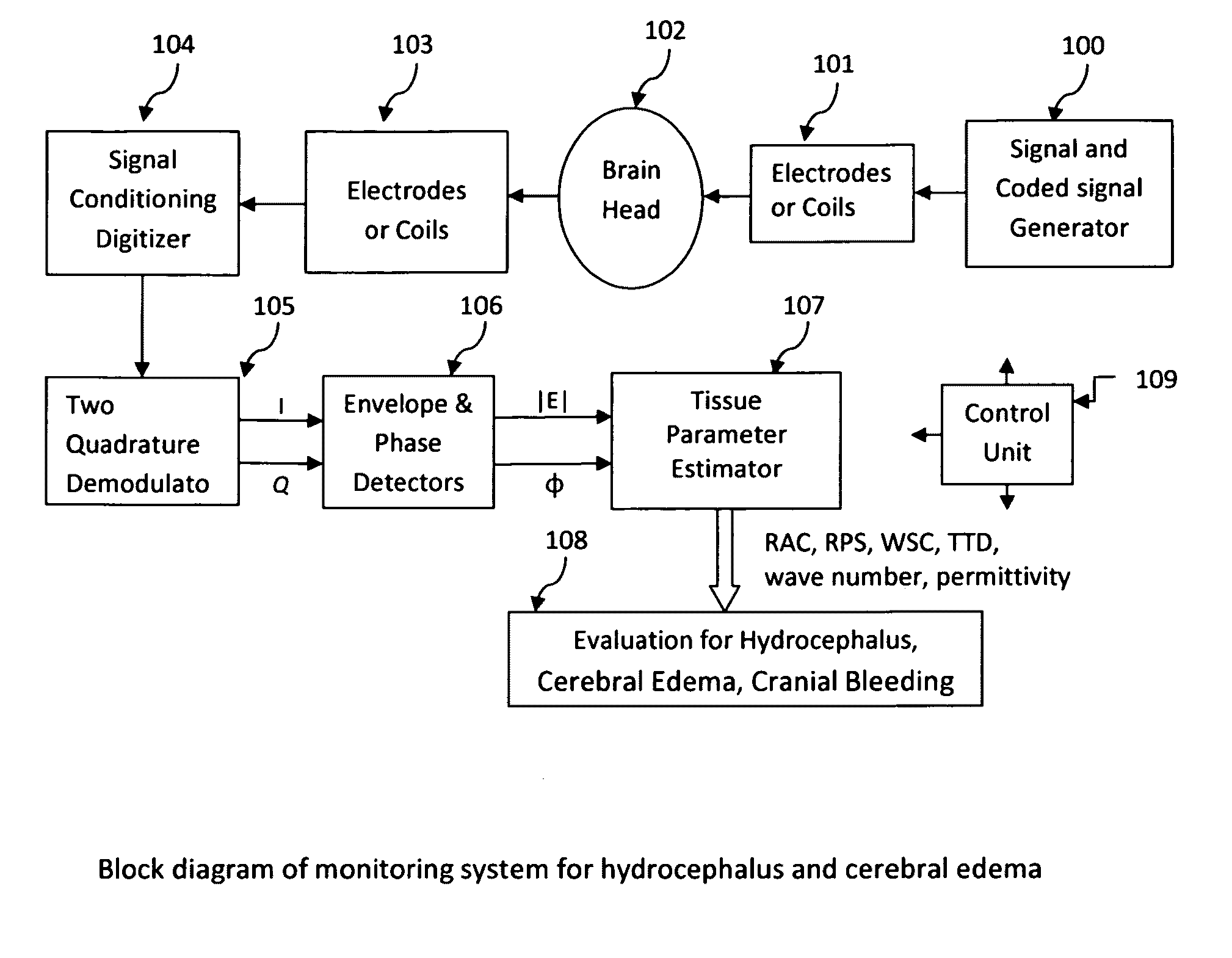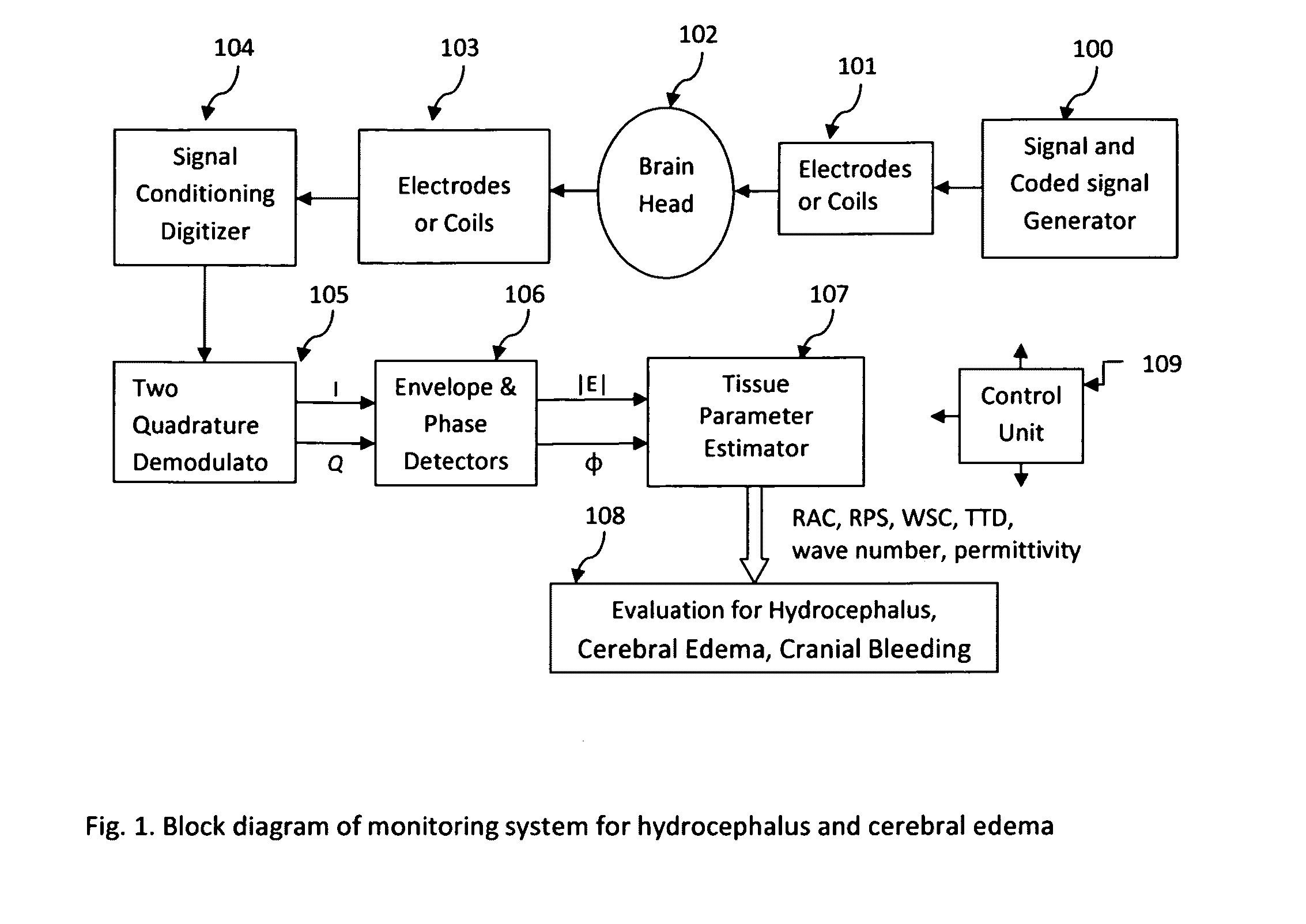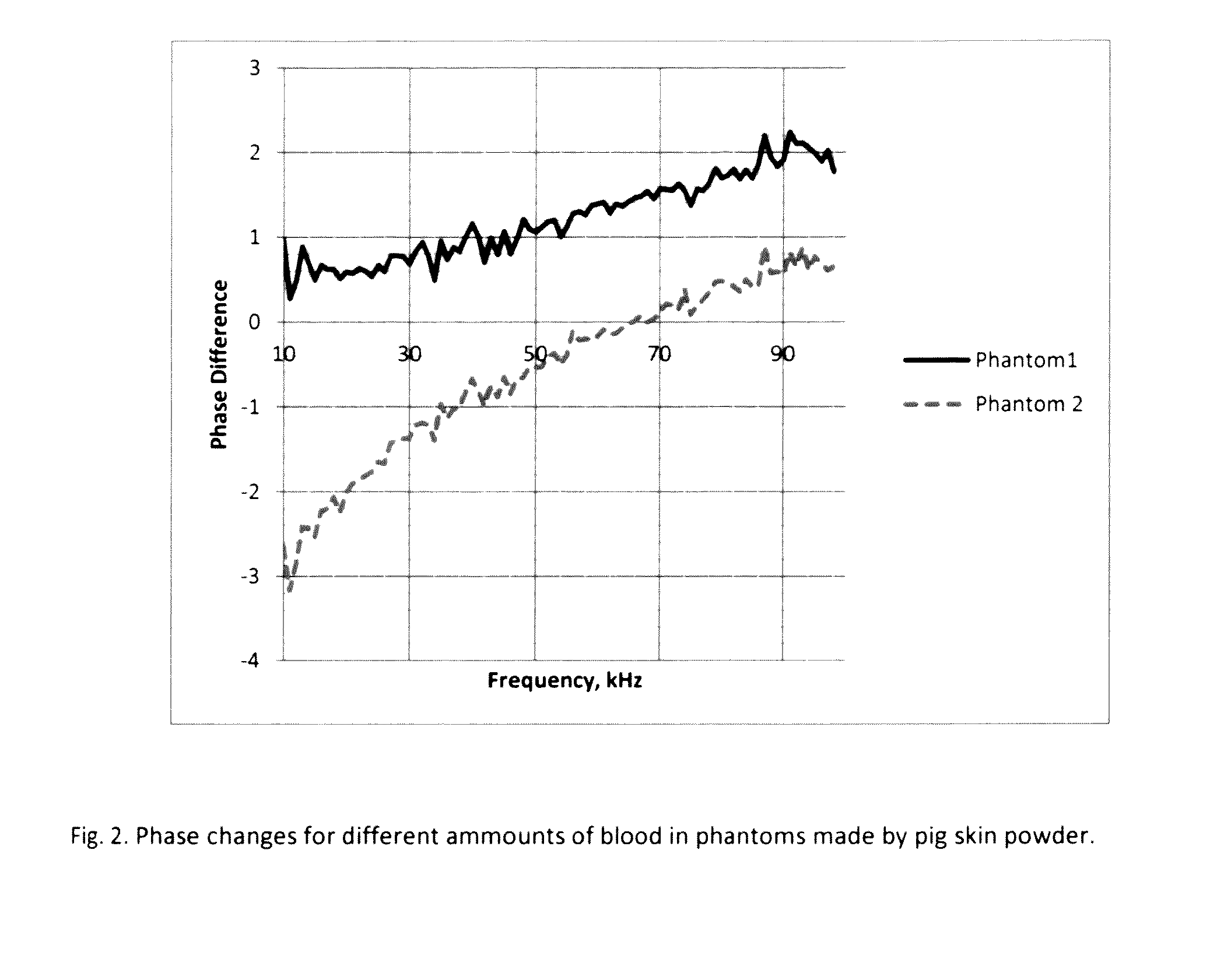Noninvasive monitoring hydrocephalus, cerebral edema, and intracranial bleeding using electromagnetic wave propagation properties
a technology of electromagnetic wave propagation and hydrocephalus, which is applied in the field of noninvasive monitoring of hydrocephalus, cerebral edema, and intracranial bleeding, can solve the problems of brain herniation & death, brain cell and tissue damage, disproportionate pressure on the brain, etc., and achieves the effects of increasing the sensitivity and specificity of monitoring status
- Summary
- Abstract
- Description
- Claims
- Application Information
AI Technical Summary
Benefits of technology
Problems solved by technology
Method used
Image
Examples
Embodiment Construction
[0028]Pathological status of biological tissues has an impact on the propagation of electromagnetic waves. The impact includes changes of wave velocity, wave length, wave number, wave magnitude and phase, etc.
[0029]The propagation of electromagnetic waves is governed by Maxwell equations:
[0030]∇×E=-∂B∂t(1)∇×H=J+∂D∂t(2)
∇·B=0 (3)
∇·D=ρv (4)
where
[0031]E=electric field strength (volts per meter)
[0032]D=electric flux density (coulombs per square meter)
[0033]H=Magnetic field strength (amperes per meter)
[0034]B=Magnetic flux density (Webers per square meter or Teslas)
[0035]J=electric current density (amperes per square meter)
[0036]ρv=electric charge density (coulombs per cubic meter)
[0037]For a given field strength, flux density is different for different mediums. This is described by the constitution relations:
D=∈E (5)
B=μH (6)
where ∈ is permittivity and μ is permeability of the medium. For air, ∈=∈0=8.85×10−12 F / m, μ=μ0=4π×10−7 H / m.
[0038]For most mediums including biological tissues, μ...
PUM
 Login to View More
Login to View More Abstract
Description
Claims
Application Information
 Login to View More
Login to View More - R&D
- Intellectual Property
- Life Sciences
- Materials
- Tech Scout
- Unparalleled Data Quality
- Higher Quality Content
- 60% Fewer Hallucinations
Browse by: Latest US Patents, China's latest patents, Technical Efficacy Thesaurus, Application Domain, Technology Topic, Popular Technical Reports.
© 2025 PatSnap. All rights reserved.Legal|Privacy policy|Modern Slavery Act Transparency Statement|Sitemap|About US| Contact US: help@patsnap.com



